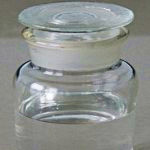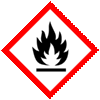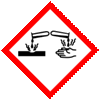 |
King of Chemicals Manufacturers |
Specifications, Properties, Uses, SDS of Acetic Acid Glacial BP Ph Eur IP JP EP Analytical Reagent FCC Food Grade Manufacturer Supplier Exporter Wholesale Small Packs, CAS Number 64-19-7. |
|
| King of Chemicals has several associated companies having accreditations like cGMP, GLP - FDA Approved Good Manufacturing Practice and Good Laboratory Practice of WHO standard, ISO-9001, ISO-14001, ISO/IEC 17025, ISO ISO-45000, HACCP, FSSC 220000, FSSAI, "REACH" Registered, Kosher & Halal Certified. e-CTD and DMF support can be made available if needed. We offer USP NF BP Ph Eur EP IP JP Analytical Reagent FCC Food Grade Chemicals & Nutraceuticals. | |
        |
|
Muby Chem Pvt. Ltd. is a several decades old group of companies, engaged in manufacturing, supplying, distributing, wholesale supplies of Acetic Acid Glacial for actual users, including retail or small pack supplies for research and development work.
We supply fine and speciality chemicals, pharmaceutical excipients, mineral fortifiers in chemically pure, analytical reagent grade, IP BP USP Ph Eur EP JP and other pharmaceutical grade monograph including FCC Food grade chemicals and Nutraceuticals at best prices. We and/or our associated units have all the facilities to supply as per cGMP standard observing good manufacturing practice and good laboratory practice. We can assure low microbial count and also offer a test certificate for the same. We maintain warehouses across USA, India, and UAE. Our group exports to USA, Canada, Mexico, Argentina, Brazil, Chile, Korea, Malaysia, Thailand, Indonesia, Europe, and several other parts of the world. We supply in wholesale container loads to small pack of few grams. Solid products may be specified for it size and shape as desired by the buyer.









Acetic Acid Glacial CAS Number 64-19-7
For Properties Specifications Uses of Acetic Acid Glacial Click Properties, Specifications, Uses, Price, Process of Acetic Acid Glacial Manufacturer.
For For SDS MSDS Sheet of Acetic Acid Glacial Click SDS Safety Data Sheet MSDS Sheet of Acetic Acid Glacial Manufacturer.
The Properties, Specifications, Monograph and Uses of Acetic Acid Glacial:
Glacial Acetic Acid: CAS Number: 64-19-7, EINECS EC Number: 200-580-7, Molecular Formula: CH3CO2H, Molecular Weight: 60.05 HS Code 2915 2100
Acetic acid systematically named ethanoic acid is an acidic, colorless liquid and organic compound with the chemical formula CH3COOH. Vinegar is no less than 4% acetic acid by volume, making acetic acid the main component of vinegar apart from water.
Acetic acid is a chemical reagent to produce chemical compounds. The largest single use of acetic acid is in the production of vinyl acetate monomer. The volume of acetic acid used in vinegar is comparatively small. Acetic acid injection into a tumor has been used to treat cancer since the 1800s. Acetic acid is used as part of cervical cancer screening in many areas in the developing world. Vinegar is used directly as a condiment and in the pickling of vegetables and other foods.Acetic Acid, Glacial FCC Food Grade Specifications
C2H4O2 Formula wt 60.05
INS: 260 --- CAS: 64-19-7
FEMA: 2006
DESCRIPTION
Acetic Acid, Glacial, occurs as a clear, colorless liquid. It boils at about 118C. When well diluted with water (e.g., 1:100), it has a vinegar odor and taste. It is miscible with water, with alcohol, and with glycerin.
Function:Acidifier; flavoring agent.
REQUIREMENTS
Identification: A 1:3 aqueous solution gives positive tests for Acetate.
Assay: Not less than 99.5% and not more than 100.5%, by weight, of C2H4O2.
Lead: Not more than 0.5 mg/kg.
Nonvolatile Residue: Not more than 0.005%.
Readily Oxidizable Substances: Passes test.
Solidification Point: Not cooler than 15.6C.
Acetic Acid, Glacial Analytical Reagent Grade Specifications:
CH3COOH --- Formula Wt 60.05
CAS Number 64-19-7
REQUIREMENTS
Assay: 99.7% CH3COOH
MAXIMUM ALLOWABLE
Color (APHA): 10
Dilution test: Passes test
Residue after evaporation: 0.001%
Acetic anhydride [(CH3CO)2O]: 0.01%
Chloride (Cl): 1 ppm
Sulfate (SO4): 1 ppm
Heavy metals (as Pb): 0.5 ppm
Iron (Fe): 0.2 ppm
Substances reducing dichromate: Passes test
Substances reducing permanganate: Passes test
Titrable base: 0.0004 meq/g.
Glacial Acetic Acid BP Ph Eur Grade Specifications
Ph Eur -- C2H4O2 -- 60.1 -- 64-19-7
DEFINITION
Content: 99.0 per cent m/m to 100.5 per cent m/m.
CHARACTERS
Appearance: Crystalline mass or clear, colourless, volatile liquid.
Solubility: Miscible with water, with ethanol (96 per cent) and with methylene chloride.
IDENTIFICATION
A. A 100 g/L solution is strongly acid (2.2.4).
B. To 0.03 mL add 3 mL of water R and neutralise with dilute sodium hydroxide solution R. The solution gives reaction (b) of acetates (2.3.1).
TESTS
Solution S: Dilute 20 mL to 100 mL with distilled water.
Appearance: The substance to be examined is clear and colourless.
Freezing point: Minimum 14.8C.
Reducing substances: To 5.0 mL add 10.0 mL of water and mix. To 5.0 mL of this solution add 6 mL of sulfuric acid, cool and add 2.0 mL of 0.0167 M potassium dichromate. Allow to stand for 1 min and add 25 mL of water and 1 mL of a freshly prepared 100 g/L solution of potassium iodide. Titrate with 0.1 M sodium thiosulfate, using 1.0 mL of starch solution as indicator. Not less than 1.0 mL of 0.1 M sodium thiosulfate solution is required.
Chlorides: Maximum 25 mg/L.
Sulfates: Maximum 50 mg/L, determined on solution S.
Iron: Maximum 5 ppm.
Heavy metals: Maximum 5 ppm.
Residue on evaporation: Maximum 0.01 per cent.
Evaporate 20 g to dryness on a water-bath and dry at 100-105 °C. The residue weighs a maximum of 2.0 mg.
Glacial Acetic Acid is also available as per IP JP EP grade monograph.
The MSDS-SDS Hazard Statement of Acetic Acid Glacial:
Glacial Acetic Acid SDS, Safety Data Sheet
MSDS, Material Safety Data Sheet 21-June-21
Section 1 - Chemical Product and Company Identification
Product Name & Other Names: Glacial Acetic or Ethanoic acid or Ethylic acid or Methanecarboxylic acid or Vinegar.
CAS#: 64-19-7
EINECS EC Number: 200-580-7
Molecular Formula: CH3COOH
Molecular Weight: 60.05
Relevant uses and uses advised against (if any): Industrial Manufacturing.
Suppliers: As per letterhead.
Section 2 - Hazards Identification
GHS, Globally Harmonized System Classification in accordance with 29 CFR 1910
Classification according to Regulation (EC) No 1272/2008
Flammable liquids (Category 3) H227
Skin corrosion/irritation (Category 1A, B, C) H314
Acute aquatic toxicity (Category 3) H402
Labeling according to GHS & Regulation (EC) No 1272/2008
GHS Label Elements  Combustible Liquid |
GHS Label Elements |
Signal Words (GHS-USA): Danger
Hazard statements (GHS-USA):
H227: Combustible liquid.
H314: Causes severe skin burns and eye damage.
H402: Harmful to aquatic life.
Precautionary statements (GHS-USA):
P210: Keep away from heat, sparks, open flames, hot surfaces. - No smoking.
P260: Do not breathe mist, vapors, spray.
P264: Wash exposed skin thoroughly after handling.
P280: Wear protective clothing, protective gloves, eye protection, face protection.
P301+P330+P331: IF SWALLOWED: rinse mouth. Do NOT induce vomiting.
P303+P361+P353: IF ON SKIN (or hair): Remove/Take off immediately all contaminated clothing. Rinse skin with water/shower.
P304+P340: IF INHALED: remove victim to fresh air and keep at rest in a position comfortable for breathing.
P305+P351+P338: If in eyes: Rinse cautiously with water for several minutes. Remove contact lenses, if present and easy to do. Continue rinsing.
P314: Get Medical advice/attention if you feel unwell.
P337+P313: If eye irritation persists: Get medical advice/ attention.
P370+P378: In case of fire: Use carbon dioxide (CO2), powder, alcohol-resistant foam for extinction.
P403+P235: Store in a well-ventilated place. Keep cool.
P405: Store locked up.
P273: Avoid release to the environment.
P501: Dispose of contents/container to comply with local, state, and federal regulations.
Section 3 - Composition/Information on Ingredients
Product Name & Other Names: Glacial Acetic Acid or Ethanoic acid or Ethylic acid or Methanecarboxylic acid or Vinegar.
CAS#: 64-19-7
EINECS EC Number: 200-580-7
Percent: 99-100% on dry basis. Dilution is always with water.
Section 4 - First Aid Measures
Always consult a physician after the first aid is given.
Eyes: Immediately flush eyes with plenty of water for at least 15 minutes, occasionally lifting the upper and lower eyelids. Get medical aid. Do NOT allow victim to rub or keep eyes closed.
Skin: Flush skin with plenty of soap and water for at least 15 minutes while removing contaminated clothing and shoes. Get medical aid if irritation develops or persists. Wash clothing before reuse.
Ingestion: Do NOT induce vomiting. If victim is conscious and alert, give 2-4 cupfuls of milk or water. Never give anything by mouth to an unconscious person. Get medical aid.
Inhalation: Remove from exposure to fresh air immediately. If breathing is difficult, give oxygen. Get medical aid. Do NOT use mouth-to-mouth resuscitation. If breathing has ceased apply artificial respiration using oxygen and a suitable mechanical device such as a bag and a mask.
Notes to Physician: Treat symptomatically and supportively.
Section 5 - Fire Fighting Measures
General Information: As in any fire, wear a self-contained breathing apparatus in pressure-demand, MSHA/NIOSH (approved or equivalent), and full protective gear. During a fire, irritating and highly toxic gases may be generated by thermal decomposition or combustion.
Flammability: Flammable. Explosive in presence of oxidizing materials.
Flash Point: 40C 104F
Auto Ignition Temperature: 463C 865F
Extinguishing Media: Use DRY chemical powder, alcohol foam, water spray or fog. Cool containing vessels with water jet to prevent pressure build-up, auto-ignition, or explosion.
Extinguishing Media Not recommended: Avoid using solid water jet as it may scatter the fire.
Special Information: In the event of a fire, wear full protective clothing and NIOSH-approved self-contained breathing apparatus with full face piece operated in the pressure demand or other positive pressure mode. At high temperatures under fire conditions, it may produce toxic or irritating fumes. Fire-extinguishing work is done from the windward and the suitable fire-extinguishing method according to the surrounding situation is used. Uninvolved persons should evacuate to a safe place.
Section 6 - Accidental Release Measures
Personal precautions, protective equipment, and emergency procedures: Ventilate area of leak or spill. Avoid breathing dust/fumes/gas/mist/vapors/spray. Use individual protective equipment (waterproof boots, suitable protective clothing, safety glasses, etc.). Restrict unprotected personnel from the area. Prevent any contact with hot surfaces. Do not approach facing the wind. Do not touch the spilled material.
Environmental precautions: Do not let the product enter drains, soil, or water sources.
Methods and materials used for containment Cleanup procedures and Storage: Contain spilled material. Cover with an inert, non-combustible absorbent material, (e.g. sand, earth, diatomaceous earth, vermiculite). Vacuum or sweep-up and remove to an approved disposal container. Finish cleaning by spreading water on the contaminated surface and allow to evacuate as per law. Remove all ignition sources and ventilate area. Neutralize with sodium bicarbonate or calcium hydroxide or dry soda ash or calcium carbonate and deposit in a sealed bag or container. Use water spray to dilute spill to a non-flammable mixture. Remove all sources of ignition. Use a spark-proof tool. Provide ventilation.
Section 7 - Handling and Storage
Precautions for safe handling: Apply according to good manufacturing and industrial hygiene practices. Ensure proper ventilation. In case of insufficient ventilation, wear suitable respiratory equipment. Wash thoroughly after handling. Do not drink, eat, or smoke while handling. Avoid contact with skin, eyes, and clothing. Minimize dust/mist generation. Avoid breathing dust/fumes/gas/mist/vapors/spray. Avoid contact with eyes, skin, and clothing. Keep container tightly closed. Avoid ingestion and inhalation. Use individual protective equipment (waterproof boots, suitable protective clothing, safety glasses, etc.). Prevent any contact with hot surfaces.
Conditions for safe storage, including any incompatibilities: Store in cool, dry, and ventilated area away from heat sources and protected from sunlight in tightly closed original container. Keep air contact to a minimum. Store protected from heat, sparks and ignition sources and incompatible materials. Avoid contact with skin and eyes. Avoid inhalation of dust/mist/vapor. Do not store with incompatible materials like strong oxidizing agents, strong alkalis, and metals. Store protected from heat and flames.
Section 8 - Exposure Controls, Personal Protection
Airborne Exposure Limits: Airborne Exposure Limits:
USA OSHA Permissible Exposure Limit (PEL): 10 ppm (TWA).
ACGIH Threshold Limit Value (TLV): 10 ppm (TWA); 15 ppm (STEL).
USA NIOSH 10ppm TWA; 25 mg/m3 TWA 50ppm IDLH
Ventilation System: A system of local and/or general exhaust is recommended to keep employee exposures as low as possible. Local exhaust ventilation is generally preferred because it can control the emissions of the contaminant at its source, preventing dispersion of it into the general work area.
Personal Respirators (NIOSH Approved): For conditions of use where exposure to dust or mist is apparent and engineering controls are not feasible, a particulate respirator (NIOSH type N95 or better filters) may be worn. If oil particles (e.g. lubricants, cutting fluids, glycerin, etc.) are present, use a NIOSH type R or P filter. For emergencies or instances where the exposure levels are not known, use a full-face positive-pressure, air-supplied respirator. WARNING: Air-purifying respirators do not protect workers in oxygen-deficient atmospheres.
Skin Protection: Wear impervious protective clothing, including boots, gloves, lab coat, apron or coveralls, as appropriate, to prevent skin contact.
Eye Protection: Use chemical safety goggles and/or full face shield where dusting or splashing of solutions is possible. Maintain eye wash fountain and quick-drench facilities in work area.
Other Control Measures: Maintain good housekeeping in work area. Dust deposits on floors and other surfaces may pick up moisture and cause the surfaces to become slippery and present safety hazards. Handle in accordance with good industrial hygiene and safety practice.
Section 9 - Physical and Chemical Properties
Appearance: Clear Liquid
Odor: Vinegar odor
Odor threshold: Not available.
pH: 2 for 1% solution, 2.4 (1.0M solution)
Relative density: around 1.05
Boiling Point: 118C (244.5F)
Melting Point: 16.6C (61.9F).
Flash point: Not available.
Auto-ignition temperature: Not available.
Decomposition temperature: Not available.
Upper/lower flammability or explosive limits: Not available.
Vapor pressure: Not available.
Vapor density: Not available.
Evaporation rate: Not available.
Flammability (solid, gas): Not available.
Partition coefficient: n-octanol/water: Not available.
Solubility: Soluble in water
Viscosity: Not available.
Molecular Formula: C2H4O2
Molecular Weight: 60.05
Section 10 - Stability and Reactivity
Chemical Stability: Stable under normal temperatures and pressures. It is hygroscopic.
Conditions to Avoid: Incompatible materials, dust/mist generation, moisture, exposure to heat, spark, moist air, or water.
Incompatibilities with Other Materials: Oxidizing agents, strong alkalis, and metals.
Hazardous Decomposition Products: Carbon monoxide, irritating and toxic fumes and gases, carbon dioxide.
Hazardous Polymerization: Will not occur.
Section 11 - Toxicological Information
Acute oral toxicity (LD50): 3310 mg/kg [Rat].
Acute dermal toxicity (LD50): 1060 mg/kg [Rabbit].
Acute toxicity of the vapor (LC50): 5620 1 hours [Mouse].
LC50 Inhalation - rat - 4 h - 11.4 mg/l 4 hours
Carcinogenicity: No component of this product present at levels greater than or equal to 0.1% is identified as possible or confirmed human carcinogen by IARC, ACGIH, OSHA and NTP.
Mutagenic Effects: Not available.
Teratogenic Effects: Not available.
Developmental Toxicity: Not available.
Reproductive Effects: No information available.
Section 12 - Ecological Information
Persistence and Degradability: The material will readily biodegrade.
Mobility: Mobile due to water solubility
Bioaccumulation/ Accumulation: Unlikely to bioaccumulate
Results of PBT and vPvB assessment: No data available for assessment.
Toxicity: (LC50): 423 mg/l 24 hours [Fish (Goldfish)]. 88 ppm 96 hours [Fish (fathead minnow)]. 75 ppm 96 hours [Fish (bluegill sunfish)]. >100 ppm - 96 hours [Daphnia].
Section 13 - Disposal Considerations
Whatever cannot be saved for recovery or recycling should be managed in an appropriate and approved waste disposal facility. Processing use or contamination of this product may change the waste management options. State and local disposal regulations may differ from federal disposal regulations. Dispose of container and unused contents in accordance with local requirements.
Section 14 - Transport Information
Road Transport DOT USA, TDG Canada and ADR/RID Europe
UN number: 2789
Class: 8 (3)
Packing group: II
Proper shipping name: Acetic acid, glacial
Sea Transport IMDG/IMO
UN number: 2789
Class: 8 (3)
Packing group: II
Proper shipping name: Acetic acid, glacial
Air Transport IATA/ICAO
UN number: 2789
Class: 8 (3)
Packing group: II
Proper shipping name: Acetic acid, glacial.
Section 15 - Regulatory Information
USA:
Section 313: No chemicals are reportable under Section 313.
SARA 311/312 Hazards: Acute Health Hazard, Chronic Health Hazard. See section 2.
California Prop. 65 Components: This product does not contain any chemicals known to State of California to cause cancer, birth defects, or any other reproductive harm.
Section 16 - Additional Information
DISCLAIMER: The information and recommendations set forth herein are presented in good faith and believed correct as of the date hereof. It is compiled from various sources, and it is not necessarily all inclusive nor fully adequate in every circumstance. In addition, these suggestions should not be confused with nor followed in violation of applicable laws, regulations, rules, or insurance requirements applicable. This SDS MSDS sheet is intended only as a guide to the appropriate precautionary handling of the material by a professionally trained person using this product. Individuals receiving the information must exercise their independent judgment in determining its appropriateness for a particular purpose. This shall not constitute a guarantee for any specific product features and shall not establish a legally valid contractual relationship. In no case shall our company be liable to loss or damages by the product user.

Acetic Acid Glacial Manufacturers, Suppliers, Exporters, Wholesalers:
King of Chemicals manufacturers

Plot No. 2900/46&47 + 2900/163to167, GIDC, Ankleshwar, Dist. Bharuch, India
India, USA, UAE
TEL: (Office) 91-22-23774610, 91-22-23723564
email: info@kingofchemicals.com
Copyright and Usual Disclaimer is Applicable --- March 28, 2025
If I give you “My Word” Nobody can undo it.
If I sign an “Agreement” my Lawyer will undo it
Our products are for industrial and laboratory use only. The user must test the material before use. We are not dispensing chemists or druggist and do not offer over the counter type (OTC) products for medical use by individuals.
We and our associates manufacture pure chemicals surpassing Monograph Specifications of Analytical Reagent Standards, British & European Pharmacopoeia BP Ph Eur EP Standard, US Pharmacopoeia USP NF Standard, Indian Pharmacopoeia IP Standard, Japan Pharmacopoeia JP Standard, FCC Food Grade Standard. |
|
